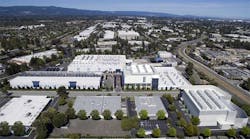Silicon Valley Data Center Market: New Projects Address Supply Constraints
We continue our series of stories on the leading geographic markets for data center space with a report on the Silicon Valley Data Center Market. Data Center Frontier is partnering with DatacenterHawk to provide in-depth market reports on each city we profile. Read on for research results on how the Silicon Valley data center market is addressing supply shortages with new data center projects.
Download the full report.
Silicon Valley is one of the largest and most important data center markets in the U.S., providing space for servers to deploy new hardware and services from the Valley’s marquee technology companies, as well as a legion of fast-moving startups. The region is facing a shortage of finished data center space due to a dwindling supply of development sites in key data center corridors.
In recent years, the Silicon Valley market has experienced some growing pains. It continues to be a desirable site to deploy IT capacity, but growth is moderating due to challenges in site acquisition. Land is harder to find, and recent projects have featured properties with existing buildings that must be torn down and redeveloped.
This places a premium on new projects in Santa Clara, the region’s primary data center hub, due to its lower cost of electric power. But interest is also growing in options in other cities in Silicon Valley, especially San Jose.
But there’s change on the horizon: After several years of inventory constraints, the Silicon Valley market will see new data centers come online in 2018 and 2019.
The Silicon Valley area is home to nearly 2.6 million square feet (SF) of commissioned data center space, representing 368 megawatts (MW) of commissioned power, according to market research from datacenterHawk. That makes Silicon Valley the second-largest market for data center space in the U.S., trailing only Northern Virginia.
Silicon Valley provides one of the industry’s most compelling proximity stories. The region is home to America’s leading tech players, including Apple, Google, Facebook, Intel, Cisco, Oracle and many others. Its residents represent a huge base of tech-savvy consumers, who are consistently among the earliest adopters of new products and services. Proximity to corporations and Internet consumers continues to be a key factor in site selection, guaranteeing Silicon Valley a secure future as a major data center market.
That’s why Silicon Valley remains one of America’s busiest markets for data center space, despite several potential deterrents, including expensive land, comparatively high cost of power and the risk of earthquakes.
Development in Northern California is somewhat limited due to challenges in site acquisition. While demand is still active, growth over the past year has slowed compared to other major markets.
Over the last two years, Northern California’s lead over the next largest markets—Dallas and Chicago — has shrunk. In 3Q 2015, Northern California was approximately 60 MW larger than Dallas, and 135 MW larger than Chicago. Since then, Northern California has added another 55 MW of power, while Dallas has added nearly 70 MW of power and Chicago has added 120 MW in the same period. If the trend continues, Dallas and Chicago could surpass Northern California in size by 2020.
[clickToTweet tweet=”Silicon Valley is facing a shortage of finished data center space due to a dwindling supply of development sites in key data center corridors. #datacenters” quote=”Silicon Valley is facing a shortage of finished data center space due to a dwindling supply of development sites in key data center corridors. #datacenters”]
Much of the activity in Silicon Valley is focused on Santa Clara, which boasts 34 data centers located in a three-and-a-half square mile area, rivaling “Data Center Alley” in Northern Virginia for the world’s largest concentration of data centers. Santa Clara has emerged as the Data Center Capital of Silicon Valley due to competitive power pricing from the municipal utility, Silicon Valley Power, whose rates are significantly lower than the cost of power from PG&E in surrounding towns. This price difference ranges between 25 and 40 percent.
Major Cloud Players Seek Options Beyond Santa Clara
But major cloud players are also seeking options beyond Santa Clara. ln September, Microsoft purchased a 65-acre development site in San Jose for $73.2M. The site is currently zoned to allow a 450,000 SF, 50 MW data center facility to be constructed, in combination with other industrial types of buildings. Microsoft is one of Silicon Valley’s largest data center users and was responsible for much of the multitenant absorption in 2015 and 2016.
While the land buy doesn’t rule out Microsoft leasing from data center operators in the future, it does reveal a desire for a controlled growth pathway in Silicon Valley. There are several major markets, including Chicago and Northern Virginia, in which hyperscale players mix company-built projects with leased data center space.
The Microsoft deal draws attention to the significant increase in land pricing seen for U.S. data center projects over the last 12 months. Microsoft paid $1.12 million per acre for undeveloped land in San Jose. By comparison, CoreSite recently paid $12.2 million for a two-acre expansion site in Santa Clara, or about $6.1 million per acre. The CoreSite property included an existing building, making it an apples-versus-oranges comparison from a real estate valuation perspective.
[clickToTweet tweet=”Major cloud players are seeking data center space options beyond Santa Clara, expanding the Silicon Valley data center market. #colocation” quote=”Major cloud players are seeking data center space options beyond Santa Clara, expanding the Silicon Valley data center market. #colocation”]
But with little open land remaining in Santa Clara, these pricing disparities may factor into future development decisions for data center providers. Power is usually a more important cost factor than land in the total cost of building and operating a data center, so Santa Clara will remain the nexus of activity in Silicon Valley for years to come.
Pricing for colocation deals in Silicon Valley.
That power pricing differential highlights the strategic importance of new projects in Santa Clara. This was a key factor in the largest acquisition in the market in 2017, as Digital Bridge acquired Vantage Data Centers. A key attraction was Vantage’s ability to expand in Santa Clara, including space for two additional data centers at its existing campus, as well as land to build an additional campus.
The limited availability of space is beginning to impact pricing, especially on deals for wholesale space and larger colocation footprints. Pricing on deals of 250 kilowatts (kW) or more has ranged from $130 to $155 per kW per month in 2017, up slightly from a range of $120 to $145 per kW per month in 2016.
Pricing on smaller colocation deals (250 kW or less) remained steady on a year-over-year basis, ranging from $175 to $300 per kW per month.
In our next article in this four-part series, we’ll take a look at the background and history of the Silicon Valley data center market, as well as trends in data center demand.
For full details on the Silicon Valley data center market, we invite you to download the Data Center Frontier Special Report: The Silicon Valley Data Center Market sponsored by Vantage Data Centers.







